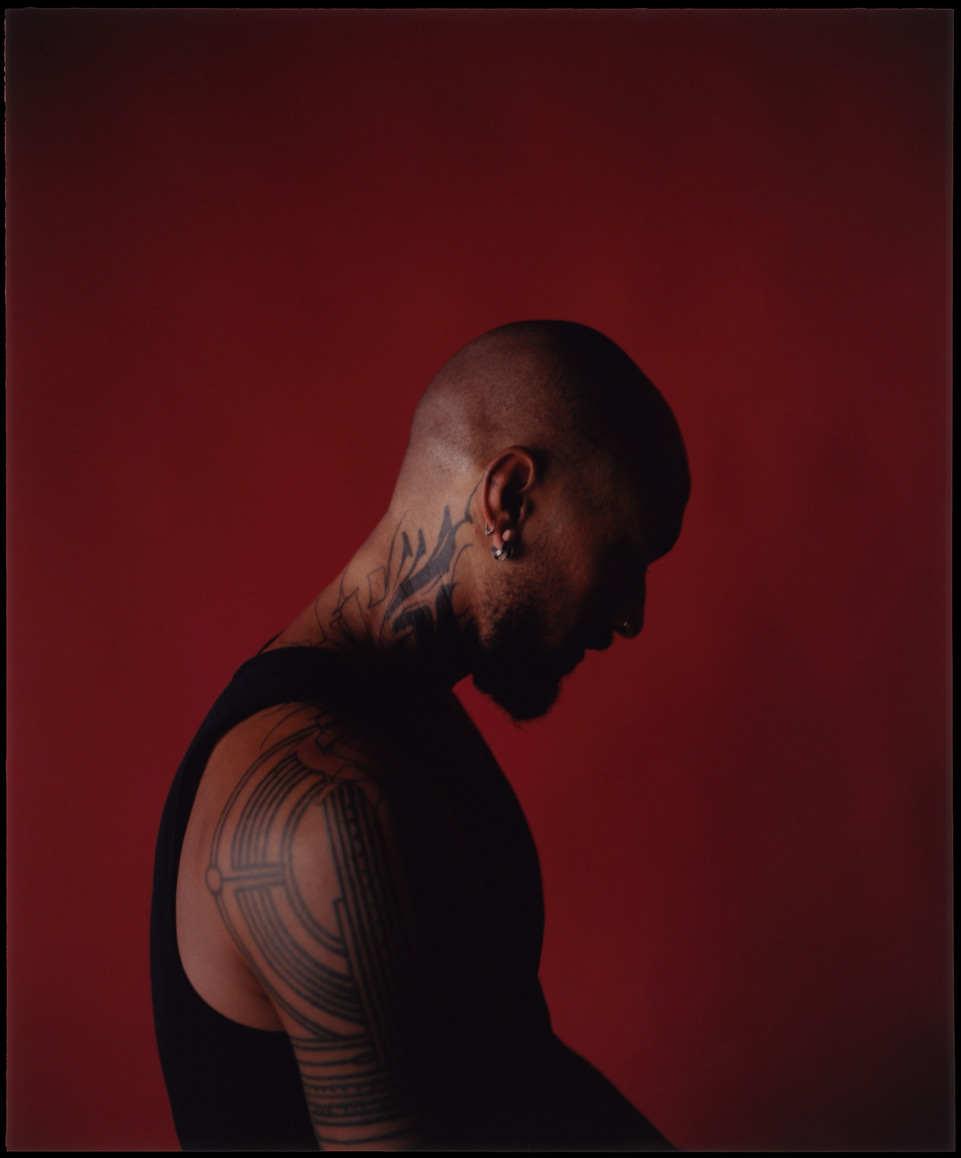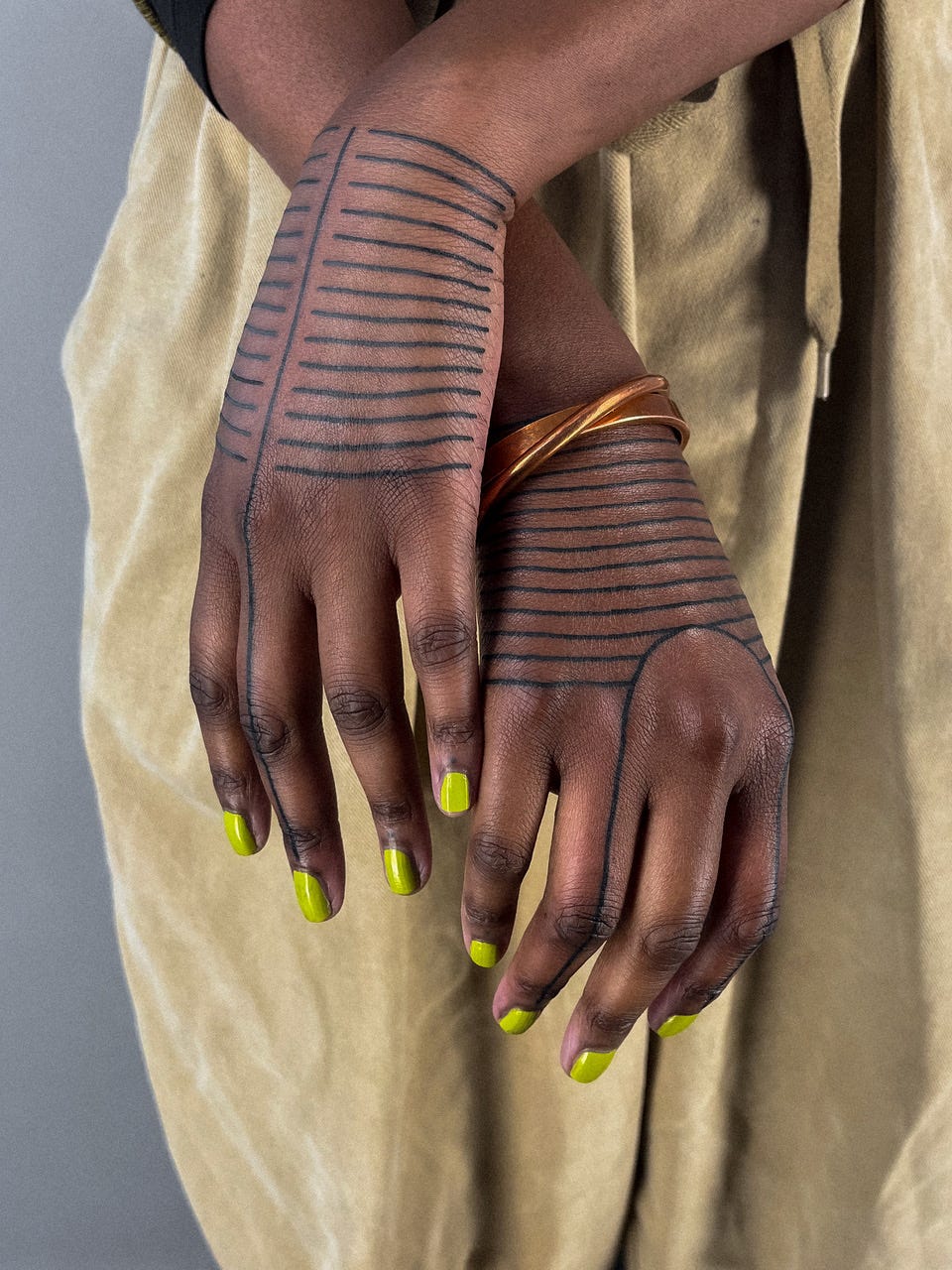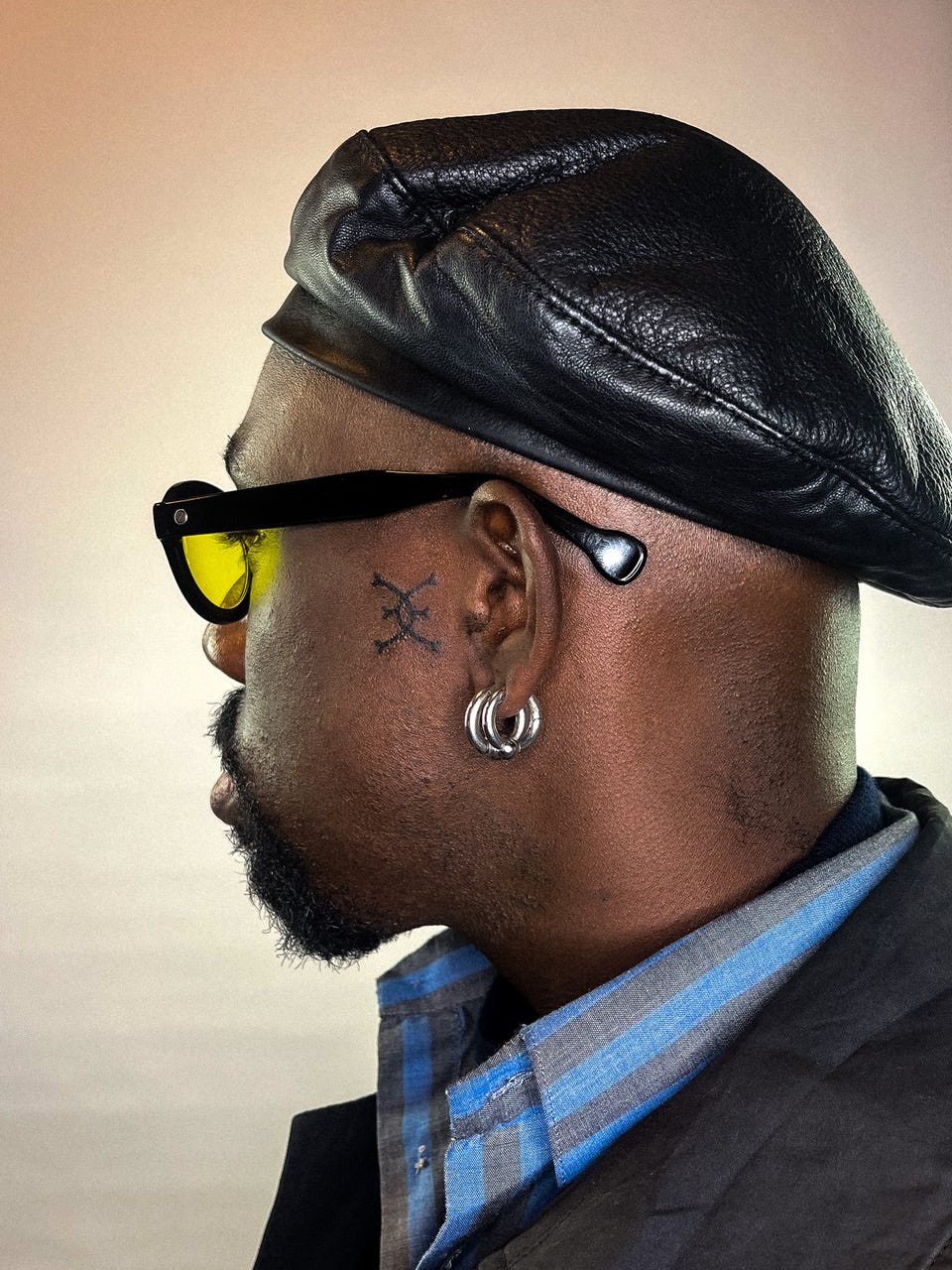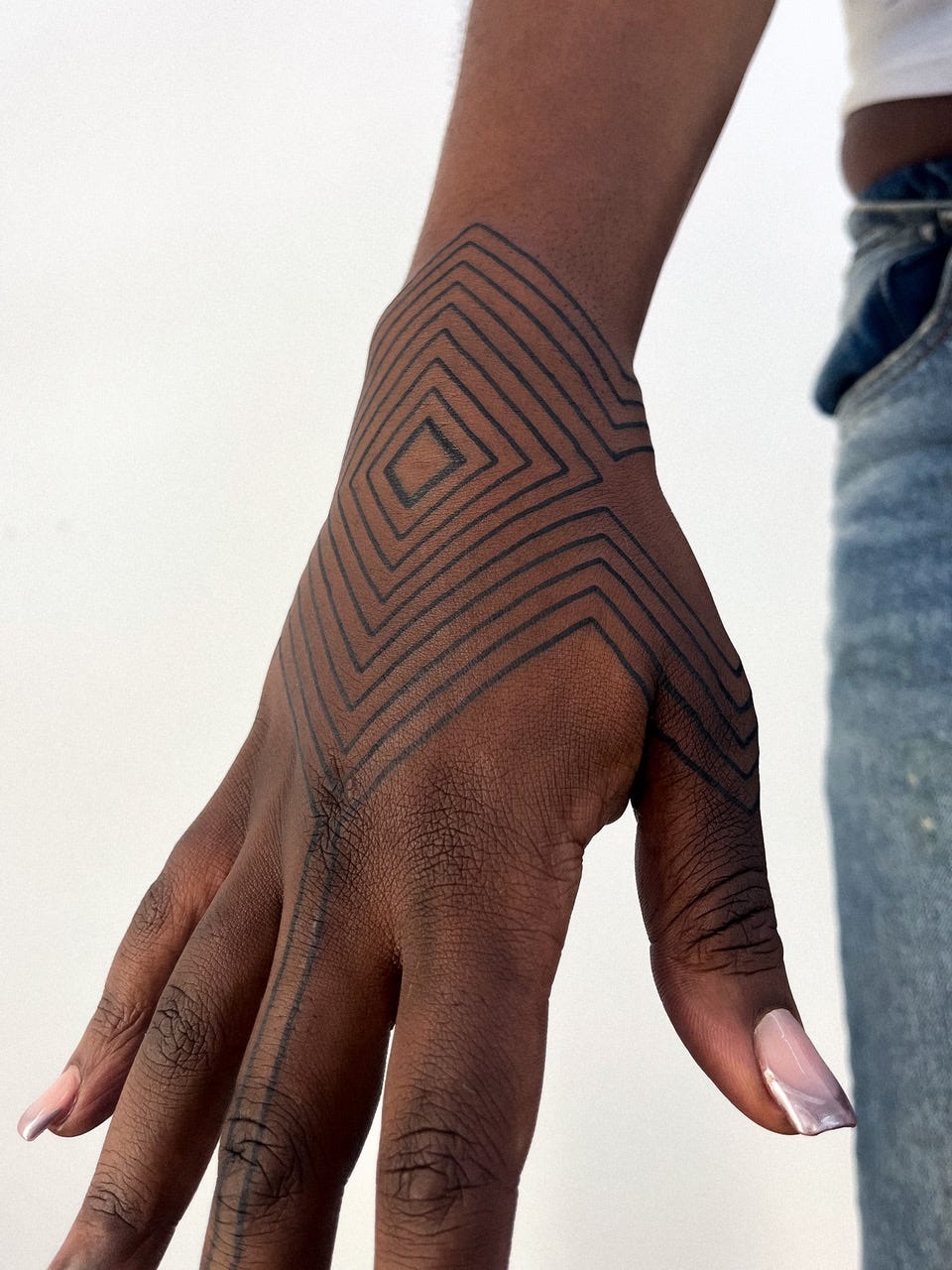Issue #2: Tattooing as a Restorative Practice with Emmanuel Uchenna Item
Nigerian-Austrian Artist, Emmanuel Item, talks West African body modifications, self expression, and the healing powers of tattoos.
In his book Spiritual Skin: Magical Tattoos and Scarification, Lars Krutak describes the tattoos of Ötzi, a 5,300+-year-old Iceman, the 2nd oldest mummy with evidence of tattoos, “Approximately 80 percent of these (50+) tattoos overlap with classical Chinese acupuncture points utilized to treat rheumatism, a medical condition that plagued the Iceman.” The use of tattoos for healing has been documented across many cultures, especially in Africa, which also utilized them for magical and spiritual transformation; tattoos were a means of revitalization for the body and the soul.
Emmanuel Uchenna Item, a 28-year-old Nigerian-Austrian tattoo artist, unwittingly encapsulates the essence of that through his work. In the last year, he has focused on West African-inspired tattooing, often creating these pieces for people of African and African descent, yearning to connect their body art to their heritage. “Sometimes, it’s a spiritual process; people cry, it’s a rollercoaster of emotions,” shares Item. Yet, as they walk out of his studio, he can see them liven, “they’ve leveled up.” Many of the people who come for this style are from communities that have been wretched by colonization and slavery, the complicated implications of which have caused the stigmatization and politicization of their bodies, especially around tattooing.
Item was born and raised in Austria with an Igbo Nigerian father and an Austrian mother but has been living for the last six years in Germany, where he came to attend school. Item developed an interest in adornments and physicality from a young age. His fascination with body art was cemented during his days in a metal rock band, where he would watch his older bandmates get inked up. “At the time, tattoos weren’t mainstream like they are now,” he says. He did what any new school artist would do: he scoured YouTube and taught himself the craft while practicing on friends, and he himself got inked up. “It’s one thing to tattoo other people,” Item declares, “the other side is to feel the pain of the tattoo.”
At the start of the pandemic, he started working as a tattooist based at Der Grimm tattoo shop in Berlin, with no backup gig. After developing an affinity for tattooing more naturalistic motifs like reptiles, birds, and snakes and doing the prerequisite starter-artist lettering work, Item began to follow his interest in line-based works, now a large part of his West African style tattoos. Item’s ventures into the West African style tattoos started from a conversation with a guy at a bar at a beach party in Lagos, who he was informed about Nsibidi - a proto-writing system once utilized by the Ekpe secret society in southeastern Nigeria. In contemporary times, Nsibidi has been experiencing a revival amongst African/African descent artists from across all spectrums of art, most notably in the art pieces by Victor Ekpuk, who incorporates these symbols in his paintings.
From then on, Item has been using Nsibidi symbols for tattoos as requested, most notably by clients who are Igbo or have discovered Igbo roots. Item’s participation in the Nsibidi revival allows him to connect to tradition, but it also allows him to bend it, revamping these ancient African symbols and introducing them to a different medium. “It’s ancient knowledge we try to incorporate into tattoo art,” says Item, “but we are not living in a village hundreds of years ago where we use this secret language to communicate.”
As he developed as an artist, he made note of the lack of prevalence of African artists/African-inspired tattoo styles in Berlin. “We got guest artists from all around the world, but nothing came from Africa. No styles nor artists” explains Item. He became a go-to for melanated customers, as an African-descendent tattooist. Then, he debuted his African tribal-influenced styles at the Berlin Tattoo Convention in 2022 and decided to work only on Black/African people for the convention, a poignant statement.
In Nigeria, tattoos and other forms of body modifications have been documented as cultural practices, notably with the Fulani, Yoruba, and Edo, amongst others. For Item, this history is unsurprising. “I think it’s a very deep-rooted evolutionary need (for self-expression), even from cave painting, ” he maintains, “Painting buildings, painting your body, painting weapons.”
However, due to colonization and oral history traditions, knowledge about the evolution of these cultural tattoos and body modifications can be hard to track, even on the internet. “Sadly, it’s not so well documented,” says Item. In his opinion, there’s also the impact of a generational pause, “I would say that some of our grandparents know the history and rituals before it got wiped out,” Item explains, “so their perception is not as negative as our parents’ generation.” On the other side of that is the fact that some of the elders have been permanently marked, so even as time has moved on and attitudes have changed, the existence of these cultural tattoo practices still lives on their skin.
So, when he travels to Nigeria, he tries to talk to elders to discover more about the reasons for their body modifications. “When I go to the village, I talk to the old people,” Item elaborates, “You will see me in the car, and I’m just scanning people for tribal marks.”
Ultimately, Item would like to use his knowledge and his style as a way to restore Africa’s place in the conversation about tattooing. While anthropologists and ethologists have historically studied African tattoos and body modifications for decades, there’s a gap in translation to contemporary times, and how the modern tattoo industry engages with these styles and African tattoo artists. Item says, “Africa is getting all the spotlight right now because people care about it right now,” he continues, “But right now, it’s not there with Nigerian tattooing, but there’s a potential.” His grand plan is to create tattoos that bring recognition to African-style tattoos so “that people would recognize West African-influenced tattoos like how they recognize Maori styles.” To achieve this, he believes he must be assured of his own powers of transformation.
“Whatever I create is already created within me,” declares Item, “there’s no knowledge outside that I don’t already know. It’s all inside.”
Watch this accompanying Q&A with Emmanuel!






